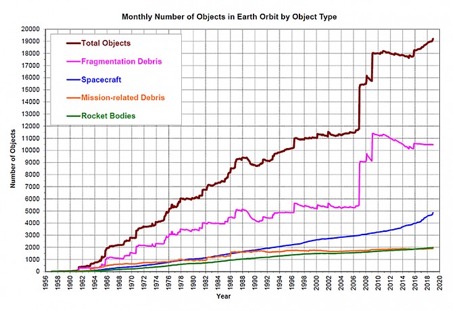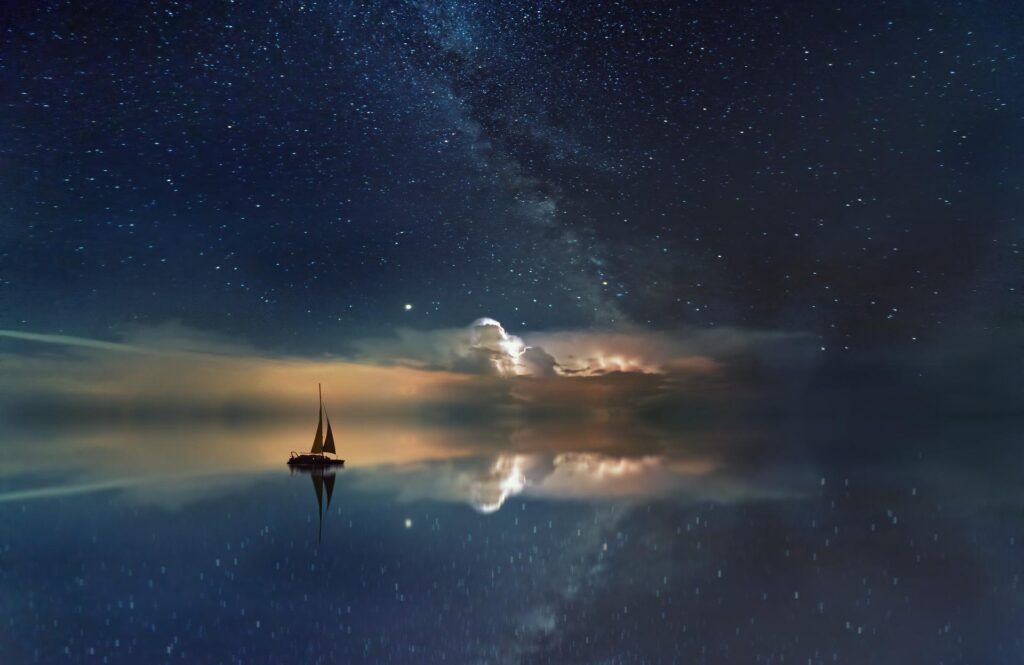During our ocean passage, we enjoy the darkness of the night. And the moon and the skies above. Very special, because we live in Rotterdam where there is always light. But maybe because we appreciate it so much, this is also why we noted that the skies are less dark than they used to be. Nowadays, the brightest sparks in the skies are not the stars or the moon. What is happening?

The satellites reflect the sun so we see them as bright objects moving in the sky. It’s at the same time confronting, comforting and confusing.
Comforting
First the comfort-part: some of these satellites enable us to communicate. We use them to update our position and occasionally update our weather forecast when we are on the ocean. Satellites can gather loads of information to solve sustainability-issues. And they can enhance communication also in remote areas.
Confusing
The confusing part is that, even in the middle of the ocean, we are ‘not alone’. And it is harder to experience the deep awe and relaxation of ‘the moon and the skies above’. Let alone knowing that there is debris of all those floating manmade objects in the skies. But these are perhaps ‘luxury-worries’. Indegenous people who use the night sky in their cultural practice raise alarm. The skies are changing and we don’t yet know if we can reverse it.
In some remote parts of the world, more satellites could improve the connection with the rest of the world. This might be in the very parts where the indigenous people live. But there hasn’t been any meaningful environmental review of these launches. And the people have not been consulted.
Confronting
From 2019 to 2022, the number of functional satellites in orbit has more than doubled.

It might be 25 times this within 8 years, with possibly up to 100,000 operational satellites. In large part this increase is from the launch of satellite mega-constellations such as SpaceX’s Starlink.

The confronting part is that most satellites are related to energy-devouring systems. The ‘war’ on information and the military system all need satellites too. And these are the big owners of the satellites. With the rise in the number of objects in space, collisions and debris might grow. The collective reflection of sunlight from all of those objects actually raised the brightness of the night sky itself, which makes it difficult to see the stars.
Sailing and surfing
Perhaps looking into the real stars more often, instead of surfing the internet might be a wise idea. This gives you energy instead of using it. And, nature is – still – most impressive.

If you want to keep surfing…
International Dark Sky Association
https://dewesoft.com/daq/every-satellite-orbiting-earth-and-who-owns-them
https://nl.wikipedia.org/wiki/Kunstmaan
https://spie.org/conferences-and-exhibitions/space-satellites-and-sustainability
https://pages.devex.com/satellites-for-sustainability
sky/https://www.universetoday.com/103382/how-to-spot-and-track-satellites/
Want to know more? Want to join? Contact us: info@fossilfreearoundtheworld.org

